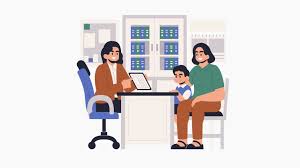In today’s media-rich environment, children encounter animated content across multiple platforms, creating both challenges and opportunities for their development. The effective teacher recognizes that partnering with parents around kids animated shows can create powerful educational continuity between classroom and home environments, maximizing learning potential while establishing healthy media habits.
When parents and teachers collaborate on guiding children’s engagement with kids animated shows, they create a consistent approach to media literacy that benefits young learners. This partnership helps children understand that screen time isn’t merely entertainment but can be a valuable learning resource when approached thoughtfully and with appropriate limits.
Creating Consistent Media Guidelines
Children thrive on consistency, and aligning media expectations between home and school creates a coherent framework for healthy viewing habits. Teachers can initiate this process by sharing the research-based guidelines they follow in the classroom, such as the American Academy of Pediatrics recommendations on screen time limits and content quality. When parents understand and implement similar guidelines at home, children receive consistent messaging about appropriate media consumption.
These shared guidelines might address not only how much time children spend with animated content but also when viewing occurs (not immediately before bedtime or meals), where (in common family spaces rather than private bedrooms), and how (actively engaged rather than passive consumption). Establishing these parameters across environments helps children internalize healthy media habits that will serve them throughout life.
Recommending Quality Content
With thousands of animated shows available across dozens of platforms, parents often appreciate guidance from educational professionals about high-quality options. Teachers can share curated lists of recommended animated programs that align with developmental goals and classroom learning objectives. These recommendations might highlight shows that demonstrate positive social behaviors, present diverse perspectives, avoid stereotypes, and include age-appropriate educational content.
When making recommendations, teachers should explain the criteria they use to evaluate animated content. This transparency helps parents develop their own assessment skills for making informed choices about media their children consume beyond the recommended list. Understanding what makes a show educational rather than merely entertaining empowers parents to become more discerning media curators.
Extending Classroom Learning Through Shared Viewing Experiences
Teachers can leverage children’s interest in animated shows by suggesting specific episodes that reinforce current classroom topics. For example, if students are learning about weather patterns, teachers might recommend episodes of science-based animated shows that explore related concepts. When parents know what their children are studying, they can select relevant animated content that reinforces these lessons through a different modality.
To facilitate this connection, teachers might send home simple viewing guides with discussion questions that help parents extend the learning potential of recommended shows. These questions prompt children to make connections between animated content and classroom learning, reinforcing key concepts through engaging conversations. This approach transforms passive viewing into active learning experiences that strengthen understanding.
Modeling Active Media Engagement
Both teachers and parents play crucial roles in modeling healthy media habits and active engagement with content. When adults watch animated shows alongside children rather than using them as digital babysitters, they demonstrate that media consumption should be thoughtful and interactive. This co-viewing approach allows adults to pause programs to discuss important points, ask questions about character motivations, or challenge problematic messages.
Teachers can provide guidance to parents about effective co-viewing strategies, such as asking open-ended questions, connecting show content to real-life experiences, and encouraging critical thinking about what they’re watching. These practices help children develop media literacy skills that transfer to independent viewing as they mature.
Creating Media-Inspired Learning Activities
Quality animated shows often inspire curiosity that extends beyond the screen. Teachers and parents can collaborate to design hands-on activities that build on this natural interest. After watching shows about space exploration, for example, children might create model solar systems at school and stargaze with family members at home, creating connected learning experiences across environments.
Teachers can share simple activity ideas that allow parents to extend animated content without requiring extensive preparation or specialized materials. These might include related books to read together, art projects inspired by show themes, or outdoor explorations that connect to animated adventures. These extensions help children understand that media consumption should spark curiosity and action rather than passive entertainment.
Addressing Challenging Content
Even carefully selected animated shows sometimes include content that requires adult guidance—whether it’s conflict resolution approaches, emotional scenarios, or complex social issues. When teachers and parents communicate about potentially challenging themes in recommended shows, they can prepare to support children’s understanding and processing of this content.
This collaborative approach allows adults to reinforce consistent messages about values and behavior expectations across environments. When children receive similar guidance about interpreting media content from both teachers and parents, they develop more coherent understanding of social norms and ethical principles portrayed in animated shows.
Conclusion
The partnership between educators and families around children’s media consumption represents a powerful opportunity to transform animated shows from potential concerns into valuable educational resources. By establishing consistent guidelines, recommending quality content, engaging actively during viewing, and extending screen experiences through related activities, adults help children develop healthy media habits alongside critical thinking skills.
This collaborative approach acknowledges that in today’s world, media literacy is as essential as traditional literacy. When teachers and parents work together to guide children’s engagement with animated content, they prepare young people to become thoughtful, discerning media consumers capable of maximizing the educational potential of entertainment while minimizing potential negative impacts.

